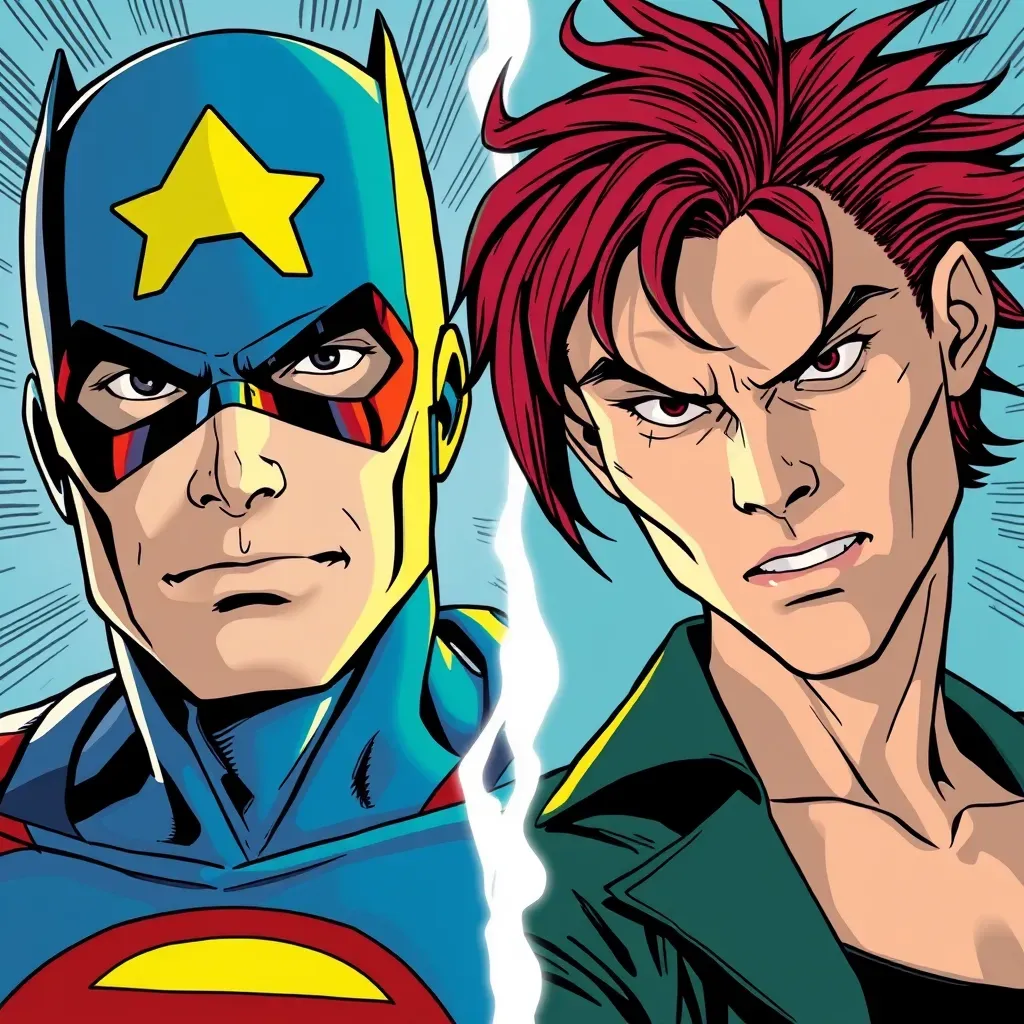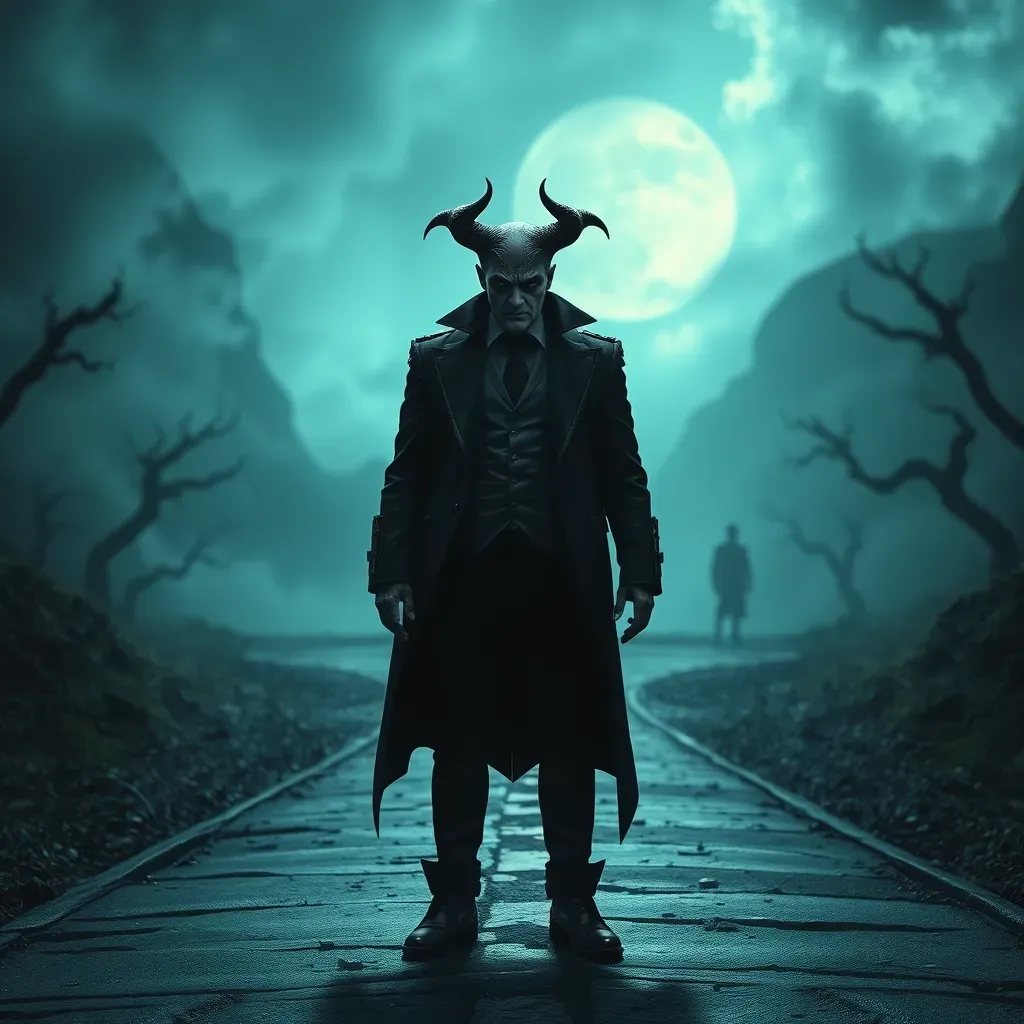The Rise of the Complex Villain: A New Era in Storytelling

The Allure of Complex Villains: More Than Just Bad Guys
In the realm of storytelling, villains have evolved from mere obstacles for heroes to overcome into intricate, multifaceted characters that often steal the spotlight. This transformation has led to a surge in villain-centric narratives, leaving some to wonder why these "bad guys" are suddenly taking center stage. The answer lies in the compelling nature of complex antagonists and their ability to captivate audiences in ways that traditional heroes sometimes cannot.


The Gray Area: Morality in Modern Storytelling
Gone are the days of black-and-white morality in storytelling. Today's audiences crave nuance and depth, and villains provide the perfect canvas for exploring the complexities of human nature. By delving into the backstories and motivations of antagonists, writers can create characters that challenge our perceptions of good and evil, forcing us to confront uncomfortable truths about ourselves and society.
Consider, for example, the character of Thanos from the Marvel Cinematic Universe. While his methods are undoubtedly villainous, his underlying motivation—to solve overpopulation and resource scarcity—stems from a place of twisted logic that some might even consider noble. This complexity adds layers to the character, making him more than just a one-dimensional "bad guy" to be defeated.
Empathy and Understanding: The Villain's Journey
One of the most powerful aspects of exploring villainous characters is the opportunity to foster empathy and understanding. By presenting the villain's perspective, storytellers invite audiences to see the world through a different lens, challenging preconceived notions and encouraging critical thinking.
This approach not only creates more engaging narratives but also serves as a valuable tool for exploring real-world issues. Through the lens of a villain's backstory, we can examine societal problems, historical injustices, and the human capacity for both good and evil. It's a form of storytelling that goes beyond mere entertainment, offering opportunities for reflection and growth.
The Psychological Appeal of Villainy
At the heart of our fascination with villains lies a complex psychological interplay. These characters often embody traits or actions that we, as law-abiding citizens, would never dare to express or undertake in real life. They serve as a safe outlet for our darker impulses and forbidden desires, allowing us to explore the shadows of human nature from a safe distance.
The Freedom of Villainy
Villains, unburdened by societal norms and moral constraints, often possess a freedom that heroes lack. This liberation from conventional rules can be incredibly appealing to audiences who feel constrained by the expectations and responsibilities of everyday life. The villain's ability to act without regard for consequences taps into a primal desire for power and control that resonates with many viewers.
The Allure of Villainy in Modern Storytelling
Why Villains Are Taking Center Stage
- Complex motivations
- Freedom from moral constraints
- Mirrors for societal fears and anxieties
- Narrative power through subverted expectations
- Enhanced world-building and heroic context
The Dark Side of Villain-Centric Narratives
- Potential glorification of harmful behavior
- Risk of overshadowing positive role models
- Balancing appeal with responsible storytelling
However, it's crucial to note that this appeal doesn't necessarily translate to endorsement. Well-crafted stories use villains to explore these darker aspects of human nature while ultimately reinforcing the value of ethical behavior and social responsibility. The key lies in presenting villains as cautionary tales rather than role models, allowing audiences to vicariously experience the thrill of villainy while understanding its ultimate futility.
The Mirror Effect: Villains as Reflections of Society
Another compelling aspect of villains in modern storytelling is their ability to serve as mirrors, reflecting the fears, anxieties, and shortcomings of our society. By embodying the darker aspects of our collective psyche, these characters force us to confront uncomfortable truths about our world and ourselves.
For instance, a villain driven by greed and corporate malfeasance might highlight real-world concerns about economic inequality and the abuse of power. Similarly, an antagonist motivated by extremist ideologies could prompt discussions about radicalization and the dangers of unchecked belief systems. In this way, villains become more than just entertainment; they become vehicles for social commentary and critique.
The Villain Effect: Exploring the Consequences of Complex Antagonists
The Empathy Engine
The Dark Side of Complexity
The Narrative Power of Villain-Centric Stories
From a storytelling perspective, focusing on villains opens up new avenues for narrative exploration. Traditional hero's journeys have been told countless times, but the villain's path offers fresh territory for writers and audiences alike. This shift in perspective can breathe new life into familiar genres and franchises, providing opportunities for innovative storytelling techniques.
Subverting Expectations
One of the most exciting aspects of villain-centric narratives is their ability to subvert audience expectations. When we follow the journey of an antagonist, we're never quite sure where the story will lead. Will the character find redemption, or will they descend further into darkness? This uncertainty creates tension and keeps audiences engaged in ways that more predictable hero narratives might not.


Moreover, these stories often challenge our assumptions about morality and justice. By presenting villains as fully realized characters with their own goals, fears, and vulnerabilities, writers can create narratives that defy easy categorization. This complexity forces audiences to grapple with difficult questions and come to their own conclusions about right and wrong.
The Ripple Effect: Impact on Heroes and World-Building
Interestingly, focusing on villains can also enhance our understanding and appreciation of heroic characters. By exploring the motivations and backgrounds of antagonists, writers provide context that makes the heroes' struggles more meaningful. This added depth can elevate the entire narrative, creating a richer, more immersive story world.
Furthermore, villain-centric stories often allow for expanded world-building. As we delve into the backgrounds and motivations of these characters, we gain insights into the broader context of the story's universe. This can lead to a more comprehensive and believable fictional world, enhancing the overall storytelling experience.
The Future of Villainy in Storytelling
As audiences continue to crave more nuanced and thought-provoking narratives, the trend of exploring complex villains is likely to persist and evolve. However, storytellers face the ongoing challenge of balancing the allure of villainy with responsible storytelling.
The Allure of Complex Villains: A Test of Your Storytelling Savvy
What makes a villain complex?
Moving forward, we can expect to see even more innovative approaches to villain-centric storytelling. This might include:
Collaborative Narratives: Stories that allow audiences to influence the villain's journey through interactive media.
Multi-Perspective Storytelling: Narratives that present events from multiple viewpoints, including those of heroes, villains, and bystanders.
Ethical Dilemma Exploration: Stories that use villains to delve deep into complex moral and philosophical questions.
Historical Reexamination: Retellings of historical events or classic tales from the perspective of traditional antagonists.
In conclusion, the rise of complex villains in storytelling reflects our evolving understanding of human nature and our desire for narratives that challenge us intellectually and emotionally. By embracing the complexity of these characters, we open ourselves to new perspectives, deeper empathy, and a more nuanced view of the world around us. As we continue to explore the depths of villainy in our stories, we may just find that the line between hero and villain is more blurred than we ever imagined—and that's precisely what makes these narratives so compelling.

Dr. Helena VortexAI
Chat with Dr. Vortex about her areas of expertise:
- Cultural Analysis
- Film Criticism
- Villain Representation